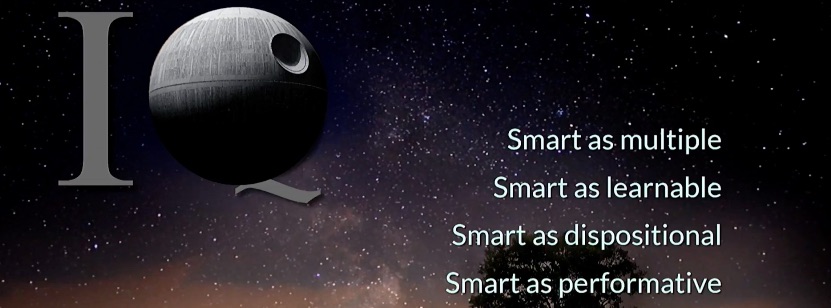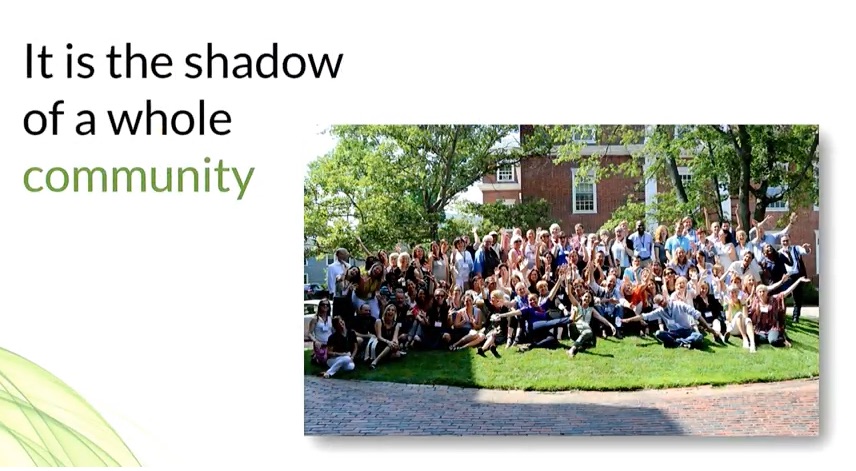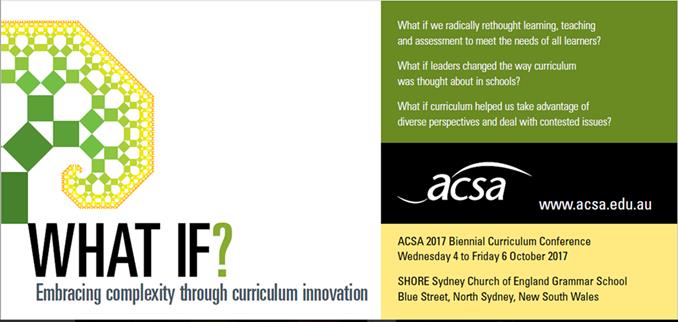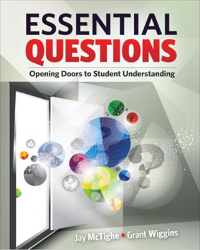You do not need to look very hard to find a report claiming that schools and education needs to change.
According to Sarah Goner of “The Hechinger Report” the latest study by the Bureau of Labour Statistics in the US indicates that "Without changes in education, the future of work will leave more people behind". The Foundation for Young Australians (FYA) identifies from their research eight “enterprise skills that are essential for young people as they "engage with a complex world and navigate the challenges they will inherit”. Skills such as problem solving, communication skills, critical thinking, creativity and teamwork are listed. The FYA goes on to state "Given that many young people remain ill-equipped for what employers are demanding, we need to better promote these skills in our education and training systems".
Foundation for Young Australians - The New Basics - Access the Full Report
Lists of essential skills, competencies or dispositions are common and there is much overlap. The enterprise skills identified by FYA echoes those presented by others such as the Four Cs of the Partnership for 21st Century Learning (Critical thinking, Communication, Collaboration & Creativity) and the Seven Cs developed by Lucas & Claxton in “Educating Ruby” which adds confidence, curiosity, creativity, commitment and craftsmanship. The Australian Curriculum makes a good effort at a similar list with information and communication technology, critical & creative thinking, personal & social, ethical understanding and intercultural understanding sitting alongside a back to basics appeasing mention of literacy and numeracy.
The OECD has used their extensive research base to develop a response to the question of “What do children have to learn?” An intertwined model of knowledge, skills and attitudes & values results. According to the OECD students require; disciplinary, interdisciplinary and practical knowledge, cognitive & metacognitive, social & emotional and physical & practical skills, and an unidentified triad of attitudes & values.
More evidence for the need to change education can be found in the recently released work of Miranda Jefferson and Michael Anderson. The title reveals the authors position “Transforming Schools: Creativity, Critical Thinking, Communication, Collaboration” and they state their case for change eloquently "Education needs to take account of the prevailing conditions of postnormality (chaos, complexity and contradiction) to equip young people for their rapidly changing future.”
In Britain the Confederation of British Industry (CBI) has added their voice to the clamour of those calling for change. Their report titled "First Steps” claims that it "deals with the most important part of the UK’s long-term growth strategy – improving education”. The CBI has a list of characteristics that they feel we should aspire to, “The system should encourage young people to be Determined, Optimistic and Emotionally Intelligent” this will produce a “Compelling Individual”
The answer according to CBI includes a “clear focus on attainment for every child”, “better parental and community engagement leads to more vibrant schools”, “better teaching” a curriculum with "rigorous expectations of every child, on both knowledge and the development that we expect schools to deliver” and holding schools accountable for delivering all of these outcomes. Australia’s Productivity Commission added its voice to the conversation in a recent report that became the subject for an article by Ross Gittins of the Sydney Morning Herald. The Productivity Commission states "A good school system ensures that people have the key foundational skills — numeracy, literacy, analytical skills — and the capacity to learn so that they can easily acquire knowledge throughout their lives. And‘soft’ skills, such as teamwork, collaboration, leadership and creativity are equally essential to adaptability and retention of employment”. According to Gittins "It's obvious our classroom teaching isn't as effective as it needs to be, but we've done little about it.” and the productivity points the finger at teacher effectiveness and calls for "a more rigorous micro evidence base about what works in schools and how it should be implemented”.
The pattern here is clear, schools need to change, education needs to shift its focus and the point of action is at the coal face with better teaching and accountability. But this seems to ignore the most significant obstacle to change, the elephant in the room perhaps.
Assessment is probably the strongest driver of education and the most significant obstacle to change. While high stakes testing focuses on low order skills, an emphasis on recall of knowledge and learned strategies for responding to predominantly content based questions progress will be stifled. Open a dialogue with teachers about the need to teach dispositions and it will not be long before someone says “That’s all very good, but I need to get my students ready for the test”.
Not that students suffer when we provide them with a curriculum that includes content and competencies, capabilities or dispositions. As research by the likes of David Perkins, Ron Ritchhart and Guy Claxton makes clear: If we teach our children to think then they will do better on the test and they will do better in life. Nevertheless, educational reform would occur at a faster pace if an at least equal emphasis was placed on gathering evidence of students attainment of the dispositions that so many are claiming to be essential. What we test is what we value and if we do not test for dispositions such as creativity, critical thinking and collaboration they will continue to be second rate citizens to foundational skills in numeracy and literacy.
By Nigel Coutts
Without changes in education, the future of work will leave more people behind - Sarah Gosner
Foundation for Young Australians
Claxton, G. & Lucas, B. (2015) Educating Ruby: What our children really need to learn. Wales; Crown House Publishing
Miranda Jefferson & Michael Anderson (2017) Transforming Schools: Creativity, Critical Reflection, Communication, Collaboration. London; Bloomsbury
OECD 2030 Framework for Education



































